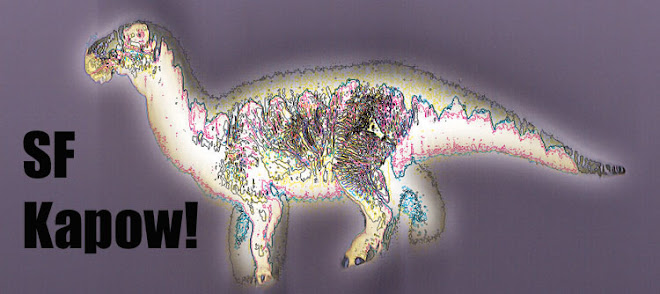Already, I'm a complete convert to the Portal Worship Cult. Funny, brain-teasing, creative, simple in an elegant and clean-lined way, it's also set me to thinking about storytelling in videogames.
I'm not what you'd call a hardcore gamer by any stretch of the imagination. But when I do buy games, I tend to avoid any game that has a story element. I mostly stick to straight up shooters that allow me to blow stuff up real good, or to weird puzzle challenge games, like Katamari Damacy. I've tried to play other types of games, like JRPGs and the more narratively dense shooters. Usually, I'm disappointed. The story elements feel like intrusions into the gameplay at the best of times.
For example, I played a lot of Killzone on my old PS2. Killzone was supposed to be this great Halo killer when it was in development. What actually came out was, for its time, a pretty solid but not spectacular shooter. I played through it a couple of times, but every time I was groaning when the cutscenes come up.
The game starts out in such a promising way: Brian Cox, playing the Hitlerish leader of the bad mutant humans, exhorting his troops with cries for revenge, while a montage displaying the brutal thuggery of his reign unfolds. It's actually pretty good. Unfortunately, that's the last you'll be seeing of Mr. Cox. I can imagine him coming into the studio, flipping through the script, rattling off his lines in his best Early Hannibal Lecter voice. The guy in the studio gives him the thumbs up, he gets his cheque and he's off to his next gig. See ya later, quality.
Every other cut scene is a babble of military and action movie cliches, with some ethnic stereotyping thrown in. The four main characters, all of whom supposedly live on a colony world somewhere light years from Earth, are from USAmerican central casting. There's the square-jawed, square-headed white male central hero, the female assassin, the Hispanic tough, profane, heavy weapons guy, and the half-mutant spy. Both he and the woman have British accents, because they're smart, right? The characters swear and bitch and have minor conflicts, none of which make a damn bit of difference to the gameplay, which is of the highly linear "Go to A and kill everybody there" variety.
Compare this to Portal. No cut scenes. No other characters, really, if you discount the Weighted Companion Cube and GlaDOS. Just this acerbic running commentary from a crazed computer, and the little-girl voices of the killer robots. But there is a story. It's hidden, literally, in the cracks of the game. Aside from GlaDOS's darkly funny instructions and misinformation, there are little hidden rooms in the game. As you go through the tasks, you find hints left behind by a previous test subject. He's apparently spent time living in the walls to avoid going through some of the more dangerous rooms. In some places he's scrawled things on the walls. It's dark and atmospheric, enhanced by the soundtrack.
Now I'm almost finished the story. Will there be resolution to this bit of story? I don't care. Portal has dropped me into a world and is giving me enough information to make myself the central character. They aren't forcing bad versions of movie dialogue down my throat. If I want plot and character in depth, I don't reach for a video game, I find a book or a movie or a TV show. Video games aren't good at depth. They're good at atmosphere and setting, and immersion.
Portal gets the way to storytell in a video game is to get out of the way.
